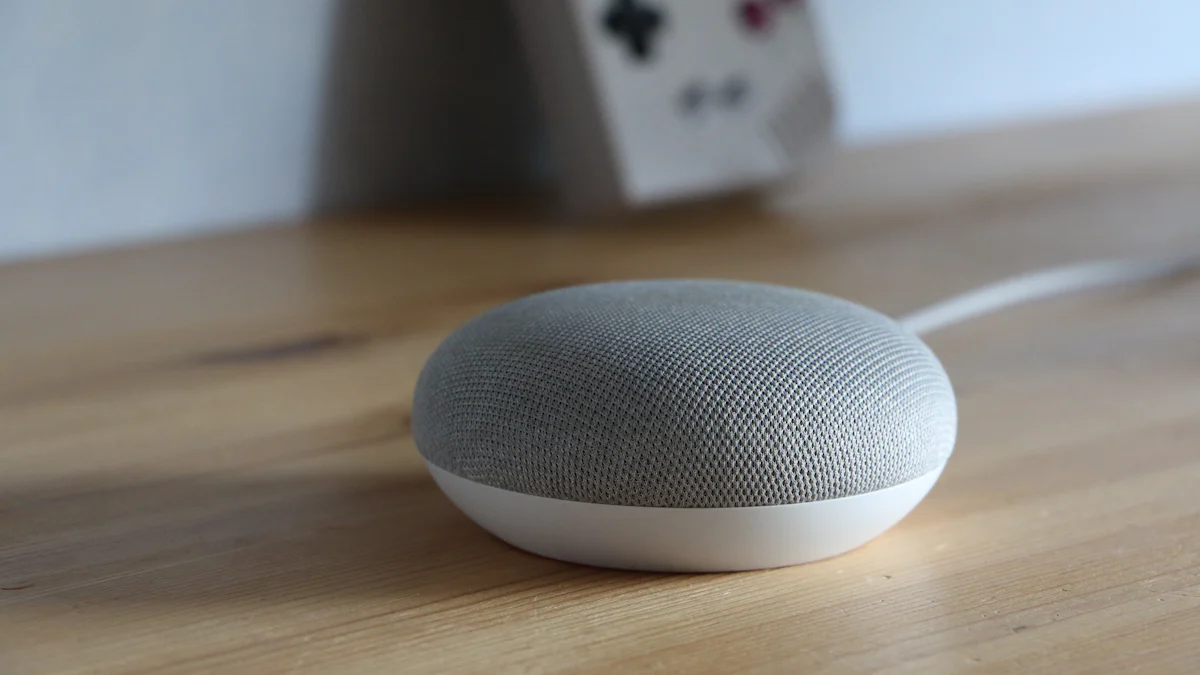How to Use Vapi for Voice AI Development

Are you curious about how to create an AI voice assistant? If you're wondering, "How do I use Vapi?" it plays a crucial role in voice AI development by providing the tools you need to build and manage your own voice assistant. With Vapi, you can easily integrate voice capabilities into your applications. But what if you're looking for alternatives? Newoaks AI is an alternative to Vapi, offering a unique approach with its ChatGPT real-time API. This gives you more flexibility and options. Whether you're a beginner or an expert, this information will help you make informed decisions.
Key Takeaways
Setting up your Vapi account is simple: register, verify your email, and configure your dashboard settings to get started on your voice AI projects.
Familiarize yourself with the Vapi dashboard to efficiently manage your voice AI applications, utilizing its user-friendly layout and comprehensive tools.
Design effective workflows by understanding key components like triggers, actions, and conditions, and always start simple to ensure manageability.
Integrate Vapi with other tools using its API to automate tasks and enhance user interactions, making your voice assistant more dynamic and responsive.
Regularly test and optimize your setup to ensure your voice assistant performs well, focusing on response accuracy and system integration efficiency.
Explore alternatives like Newoaks AI, which offers a cost-effective solution with real-time API capabilities, providing flexibility for your voice AI projects.
Utilize community forums and support resources for troubleshooting and sharing insights, enhancing your overall experience with Vapi.
Setting Up a Vapi.ai Account
Getting started with Vapi is a breeze. You just need to set up your vapi.ai account, and you'll be on your way to creating amazing voice AI applications. Let's walk through the process step by step.
Creating an Account
Registration Process
First things first, you need to register for a vapi.ai account. Head over to the Vapi website and click on the "Sign Up" button. You'll be prompted to enter your email address and create a password. Make sure to choose a strong password to keep your account secure. Once you've filled in the details, hit "Register" to create your account.
Account Verification
After registration, Vapi will send a verification email to the address you provided. Check your inbox and click on the verification link to activate your account. This step ensures that your email is valid and helps protect your account from unauthorized access.
Initial Setup
Once your account is verified, it's time to dive into the initial setup.
Dashboard Overview
When you log in, you'll land on the Vapi dashboard. This is your control center, where you can manage all aspects of your voice AI projects. The dashboard is user-friendly, with a clean layout that makes navigation easy. You'll find sections for managing phone numbers, creating assistants, and accessing analytics.
Configuring Basic Settings
Before you start building, take a moment to configure some basic settings. In the dashboard, navigate to the "Settings" section. Here, you can update your profile information, set your preferred language, and manage notification preferences. It's also a good idea to add your payment details if you plan to purchase a phone number directly from Vapi. This will streamline the process when you're ready to acquire a number for your voice assistant.
By following these steps, you'll have your vapi.ai account set up and ready to go. Now, you're all set to explore the powerful features Vapi offers for voice AI development.
Navigating the Vapi Interface

Once you've set up your Vapi account, it's time to get familiar with the interface. Understanding how to navigate the dashboard and access resources will make your voice AI development journey smoother.
Understanding the Dashboard
The Vapi dashboard is your command center. It offers a range of features designed to enhance your experience.
Key Features
User-Friendly Layout: The dashboard's clean design makes it easy to find what you need. You can quickly access different sections like phone numbers, assistants, and analytics.
Comprehensive Tools: Vapi provides tools for managing your voice AI projects efficiently. You can create and configure voice assistants with just a few clicks.
Cross-Platform Support: Whether you're on a desktop or mobile device, Vapi ensures a seamless experience.
User Interface Tips
To make the most of the dashboard, keep these tips in mind:
Explore the Menus: Spend some time clicking through the menus. Familiarizing yourself with the layout will save you time later.
Use Shortcuts: Look for shortcuts and quick-access buttons. They can speed up your workflow.
Customize Your View: Adjust settings to suit your preferences. A personalized dashboard can improve your productivity.
Accessing Documentation and Support
When you need help, Vapi has you covered with extensive resources.
Help Resources
Vapi offers detailed documentation to guide you through every step of your project. You'll find:
Step-by-Step Guides: These guides cover everything from basic setup to advanced features.
API Documentation: If you're integrating Vapi with other tools, the API documentation provides all the technical details you need.
Community Forums
Join the Vapi community to connect with other users. The forums are a great place to:
Ask Questions: If you're stuck, post your question. Experienced users and Vapi staff often provide quick responses.
Share Tips: Have a tip or trick? Share it with the community. Your insights could help others.
By mastering the Vapi interface and utilizing available resources, you'll be well-equipped to develop powerful voice AI applications. Dive in and explore all that Vapi has to offer!
Creating and Configuring Workflows

Creating a new workflow in Vapi is an exciting step in developing your AI voice assistant. You can design custom conversation flows and integrate them with existing systems. Let's explore how to design and configure these workflows effectively.
Designing a Workflow
Designing a new workflow involves understanding the components that make up your voice assistant's functionality. Here's how you can get started:
Workflow Components
Triggers: These are events that initiate your workflow. For instance, a user saying "Hello" could trigger a greeting response from your voice assistant.
Actions: Once a trigger occurs, actions define what happens next. This could be playing a message, sending data to a CRM, or even making a call.
Conditions: These are rules that determine the path of the workflow. For example, if a user asks for store hours, the assistant checks the current time before responding.
Integrations: Vapi allows you to integrate with CRMs and other systems, ensuring your voice assistant can access and update information seamlessly.
Best Practices
Keep It Simple: Start with a basic workflow and gradually add complexity. This approach helps you manage and test each component effectively.
Test Frequently: Regular testing ensures that each part of your workflow functions as expected. It also helps identify any issues early on.
Document Everything: Keep detailed notes on each component and its purpose. This documentation will be invaluable for troubleshooting and future updates.
Configuring Voice Commands
Once you've designed your workflow, it's time to configure the voice commands that will drive your AI voice assistant.
Command Syntax
Clarity is Key: Use clear and concise language for your commands. This ensures that users can easily interact with your voice assistant.
Natural Language Processing: Leverage Vapi's capabilities to understand variations in user input. This flexibility makes your assistant more user-friendly.
Command Structure: Organize commands logically. Group similar commands together to streamline the user experience.
Testing Commands
Simulate Real Scenarios: Test your commands in scenarios that mimic real-world interactions. This helps ensure your voice assistant responds accurately.
Iterate Based on Feedback: Gather feedback from users and make necessary adjustments. Continuous improvement is key to creating a successful AI voice assistant.
By following these steps, you'll be well on your way to creating automated workflows that enhance your voice assistant's capabilities. Whether you're looking to create a new voice assistant or refine an existing one, Vapi provides the tools you need to succeed.
Integrating Vapi with Other Tools
Integrating Vapi with other tools can significantly enhance your voice AI projects. By leveraging Vapi's API, you can seamlessly connect it with various applications and services, creating a more robust and versatile system. Let's dive into how you can set up API access and explore third-party tool compatibility.
API Integration
The Vapi API is a powerful resource that allows you to automate and enhance your voice AI capabilities. Here's how you can get started with API integration:
Setting Up API Access
Obtain API Credentials: First, log into your Vapi account and navigate to the API section. Here, you'll find the option to generate your API key. This key is essential for authenticating your requests.
Configure API Settings: Once you have your API key, configure your application to use it. This involves setting up the necessary headers and endpoints in your code. Vapi provides comprehensive documentation to guide you through this process.
Test Your Connection: Before diving into full-scale integration, test your API connection. Send a simple request to ensure everything is working correctly. This step helps you catch any issues early on.
Using API for Data Exchange
Automate Workflows: With the API, you can automate various tasks, such as sending voice messages or processing speech recognition data. This automation saves time and reduces manual effort.
Integrate with CRMs: Connect Vapi with your CRM to streamline customer interactions. For example, you can automatically log call details or update customer records based on voice interactions.
Enhance User Experience: Use the API to create dynamic voice responses. By accessing real-time data, your voice assistant can provide more accurate and personalized information to users.
Third-Party Tool Compatibility
Vapi's flexibility extends to its compatibility with numerous third-party tools. This compatibility allows you to expand your voice AI's functionality by integrating it with other platforms.
Supported Tools
CRMs: Vapi integrates smoothly with popular CRMs like Salesforce and HubSpot. This integration ensures that your voice AI can access and update customer data efficiently.
Automation Platforms: Tools like Zapier and Make.com work well with Vapi, enabling you to create complex workflows that span multiple applications.
Telephony Systems: If you're using enterprise telephony systems, Vapi can integrate with them to enhance your voice communication capabilities.
Integration Examples
CRM Integration: Imagine your voice assistant automatically updating a customer's profile after a call. By integrating Vapi with your CRM, this becomes a reality, improving data accuracy and saving time.
Automation with Zapier: Set up a Zap that triggers a voice message whenever a new lead is added to your CRM. This automation keeps your team informed and responsive.
Telephony Enhancement: Integrate Vapi with your existing phone system to add voice recognition features. This integration allows for more interactive and efficient customer service.
By integrating Vapi with other tools, you unlock a world of possibilities for your voice AI projects. Whether you're automating workflows or enhancing user interactions, Vapi's API and third-party compatibility provide the flexibility and power you need.
Testing and Optimizing the Setup
Once you've integrated Vapi into your system, it's crucial to test and optimize your setup. This ensures your AI voice assistant performs at its best, providing users with a seamless experience. Let's explore how you can conduct tests and apply optimization techniques effectively.
Conducting Tests
Testing is a vital step in ensuring your voice assistant functions correctly. By simulating real-world scenarios, you can identify potential issues and make necessary adjustments.
Test Scenarios
User Interaction: Test how your voice assistant responds to various user inputs. Try different phrases and commands to see if it understands and reacts appropriately.
System Integration: Check how well Vapi integrates with other tools and systems. Ensure data flows smoothly between your voice assistant and connected applications.
Performance Under Load: Simulate high-traffic situations to see how your setup handles increased demand. This helps you identify any bottlenecks or performance issues.
Analyzing Results
After conducting tests, analyze the results to gain valuable insights:
Response Accuracy: Evaluate how accurately your voice assistant interprets and responds to user commands. Look for patterns in any errors or misunderstandings.
Integration Efficiency: Assess how efficiently data is exchanged between Vapi and other systems. Identify any delays or failures in communication.
User Feedback: Gather feedback from users to understand their experience. Use this information to pinpoint areas for improvement.
Optimization Techniques
Optimizing your setup enhances the performance and accuracy of your AI voice assistant. Here are some techniques to consider:
Performance Tuning
Resource Allocation: Ensure your system has adequate resources to support Vapi's operations. This includes processing power, memory, and network bandwidth.
Load Balancing: Distribute traffic evenly across servers to prevent overload. This improves response times and ensures consistent performance.
Caching: Implement caching strategies to reduce the load on your system. By storing frequently accessed data, you can speed up response times.
Enhancing Accuracy
Training Data: Continuously update and refine the training data used by your voice assistant. This helps it learn and adapt to new user inputs.
Natural Language Processing (NLP): Leverage advanced NLP techniques to improve understanding of user commands. This makes your voice assistant more intuitive and user-friendly.
Feedback Loops: Establish feedback loops to gather user input and make iterative improvements. This ongoing process helps enhance the accuracy and effectiveness of your AI voice assistant.
By conducting thorough tests and applying these optimization techniques, you can ensure your voice assistant operates smoothly and efficiently. This not only improves user satisfaction but also maximizes the potential of your Vapi integration.
Troubleshooting Common Issues
Even with the best setup, you might encounter some hiccups while using Vapi. Don't worry! Troubleshooting is a normal part of the process. Let's dive into how you can identify and fix common issues effectively.
Identifying Problems
When things don't go as planned, the first step is to pinpoint the problem. Here's how you can do that:
Common Error Messages
You might see error messages pop up from time to time. These messages are your first clue to what's going wrong. Some common ones include:
Authentication Failed: This usually means there's an issue with your API key. Double-check that you've entered it correctly.
Connection Timeout: This could indicate network issues. Ensure your internet connection is stable.
Invalid Command: If your voice assistant doesn't understand a command, review the command syntax for errors.
Diagnostic Tools
Vapi provides several tools to help you diagnose issues:
Logs: Check the logs in your Vapi dashboard. They offer detailed information about recent activities and errors.
Test Console: Use the test console to simulate commands and see how your assistant responds. This helps you identify where things might be going wrong.
API Documentation: Refer to the API documentation for troubleshooting tips related to integration issues.
Solutions and Workarounds
Once you've identified the problem, it's time to find a solution. Here are some common fixes and workarounds:
Fixing Configuration Errors
Configuration errors can often be resolved with a few adjustments:
Review Settings: Go through your Vapi settings to ensure everything is configured correctly. Pay special attention to API keys and integration settings.
Update Software: Make sure you're using the latest version of any software or tools integrated with Vapi. Updates often include bug fixes and improvements.
Re-test Commands: If a command isn't working, try re-testing it in the test console. Adjust the syntax if necessary.
Contacting Support
If you're still stuck, don't hesitate to reach out for help:
Vapi Support Team: Contact the Vapi support team for assistance. They can provide expert guidance and help resolve complex issues.
Community Forums: Engage with the Vapi community forums. Other users might have faced similar issues and can offer valuable insights.
By following these steps, you can troubleshoot and resolve most issues you encounter with Vapi. Remember, every problem is an opportunity to learn and improve your setup. With the right information and tools, you'll have your voice assistant running smoothly in no time.
Newoaks AI as an Alternative to Vapi
Exploring alternatives can open up new possibilities for your voice AI projects. If you're wondering how do I use Vapi, you might also be interested in Newoaks AI, which offers a fresh approach to voice AI development. Let's dive into what makes Newoaks AI a compelling choice and how it compares to Vapi.
Overview of Newoaks AI
Newoaks AI stands out as a versatile platform for voice AI development. It provides unique features that cater to both beginners and seasoned developers.
Features and Benefits
Real-Time API: Newoaks AI leverages the ChatGPT real-time API, allowing you to create dynamic and responsive voice applications. This feature ensures that your voice assistant can handle real-time interactions smoothly.
Flexibility: The platform offers flexibility in designing custom conversation flows. You can tailor your voice assistant to meet specific needs, making it a great fit for various industries.
Cost-Effectiveness: Unlike Vapi, which charges a premium for its services, Newoaks AI provides a more budget-friendly option. This makes it accessible for startups and small businesses looking to integrate voice AI without breaking the bank.
Comparison with Vapi
When comparing Newoaks AI and Vapi, several key differences emerge:
Integration Capabilities: Vapi excels in integrating with existing telephony systems and CRMs, offering seamless connectivity. However, Newoaks AI focuses on providing a robust API for real-time interactions, which can be more suitable for applications requiring immediate responses.
Pricing Structure: Vapi's pricing includes a $0.05/minute premium, which can add up quickly. In contrast, Newoaks AI offers a more straightforward pricing model, making it a cost-effective alternative.
Developer Accessibility: Both platforms are developer-friendly, but Newoaks AI's use of the ChatGPT API provides a modern approach to voice AI development, appealing to those familiar with OpenAI's ecosystem.
Using ChatGPT Real-Time API
If you're considering Newoaks AI, understanding how to use its ChatGPT real-time API is crucial. This API is the backbone of Newoaks AI's voice capabilities.
Setup Process
Create an Account: Start by signing up on the Newoaks AI platform. Once registered, you'll receive access to the ChatGPT API.
Obtain API Key: After setting up your account, generate an API key. This key is essential for authenticating your requests and accessing the API's features.
Configure Your Application: Integrate the API into your application by setting up the necessary endpoints and headers. Newoaks AI provides detailed documentation to guide you through this process.
Integration Tips
Leverage Real-Time Capabilities: Use the API to create voice assistants that can respond instantly to user inputs. This real-time interaction enhances user experience and engagement.
Optimize for Performance: Ensure your application is optimized to handle the API's data flow efficiently. This includes managing network resources and processing power.
Experiment with Features: Explore the various features offered by the ChatGPT API. Experimenting with different settings can help you unlock the full potential of your voice assistant.
By considering Newoaks AI as an alternative to Vapi, you gain access to a platform that offers unique benefits and capabilities. Whether you're focused on cost-effectiveness or real-time interactions, Newoaks AI provides the tools you need to succeed in voice AI development.
You've explored the powerful capabilities of Vapi in voice AI development. This tool stands out for its ability to seamlessly integrate advanced voice assistant features into applications. Vapi's mature platform and outstanding capabilities make it a top choice for developers aiming to automate business-to-customer interactions effectively. However, don't overlook Newoaks AI as a viable alternative. It offers a unique approach with its ChatGPT real-time API, providing flexibility and cost-effectiveness. Consider your specific needs and explore both options to find the best fit for your ai voice assistant projects.
FAQ
What is Vapi?
Vapi is a Voice AI platform designed specifically for developers. It provides the tools and resources you need to build and manage voice assistants. With Vapi, you can integrate voice capabilities into your applications seamlessly.
How can I set up Vapi integration?
Setting up Vapi integration is straightforward. You can implement it on existing agents by following a few simple steps. This integration allows for more realistic telephone calls, enhancing the overall user experience.
Is Vapi suitable for beginners?
Absolutely! Vapi caters to both beginners and experienced developers. Its user-friendly interface and comprehensive documentation make it easy for anyone to get started with voice AI development.
Can I use Vapi with other tools?
Yes, you can integrate Vapi with various third-party tools. It supports CRMs, automation platforms like Zapier, and even telephony systems. This compatibility expands the functionality of your voice AI projects.
What are the costs associated with using Vapi?
Vapi's pricing includes a $0.05/minute premium for its services. While this might add up, the platform offers robust features that justify the cost. Consider your project's needs to determine if Vapi fits your budget.
How does Vapi compare to Newoaks AI?
Vapi excels in integration capabilities, especially with telephony systems and CRMs. On the other hand, Newoaks AI focuses on real-time interactions using the ChatGPT API. Each platform has its strengths, so choose based on your specific requirements.
What support resources does Vapi offer?
Vapi provides extensive support resources, including detailed documentation and community forums. You can find step-by-step guides, API documentation, and a platform to connect with other users for advice and tips.
How do I troubleshoot common issues with Vapi?
Start by identifying the problem using error messages and diagnostic tools like logs and the test console. If needed, contact Vapi's support team or engage with the community forums for additional help.
Can I customize my voice assistant with Vapi?
Yes, Vapi allows you to design custom workflows and configure voice commands. You can tailor your voice assistant to meet specific needs, ensuring it aligns with your project's goals.
What makes Vapi a good choice for voice AI development?
Vapi stands out for its ability to integrate advanced voice assistant features into applications. Its mature platform and comprehensive capabilities make it a top choice for developers looking to automate business-to-customer interactions effectively.
See Also
Harnessing Personalization: Enhancing GPT-3 Chatbots for Assistants
Revolutionizing SMS Interaction Through Newoaks AI Innovations
Discovering Advantages of ChatBot API for Bot Development

